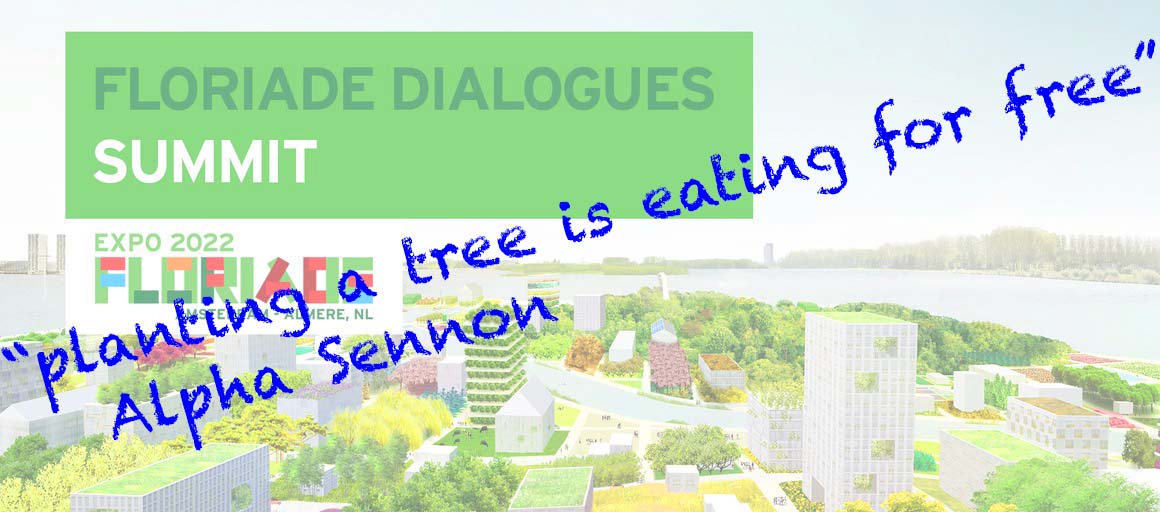
Landscape Foodscape
Landscape Foodscape is onderdeel van Fekkes Landschapsarchitectuur, speciaal gericht op voedselbossen en eetbare landschappen.
Het eetbare landschap, geheel of grotendeels geïnspireerd op voedselbosbouw, vormt het gereedschap voor een regenererende en voedende stads- en landschapsinrichting. Lees meer…
Drieluik
Met het drieluik landschapsarchitectuur, eetbaar landschap en educatief voedselbos verzorgen we advies, ontwerp, coaching en educatie aan bedrijven, particulieren, stichtingen en overheden.
Lees meer…
Het laatste nieuws
Nieuwsitems
Nieuwsbrieven
Blogs
Voor meer informatie of een vrijblijvend gesprek:
tel: 06-424 688 40
e-mail: mail@fekkeslandschap.nl
Jelle Fekkes
Tuin- en landschapsarchitect bnt,
voedselbosbouwer

"Planting a tree is eating for free"
Geplaatst op 28 maart 2019.
Today at the Floriade Dialogues Summit the theme was Green and Healthy Food Cities for all. With speakers like Rai Patel, Charles C. Mann and Adriaan Geuze my expectations were high. And although the presentations were informative, I noticed that the dialogue has not gone further for the last decade. The discussion on Food and the City still doesn’t go beyond social and economic structures and the importance of connecting city people with the (hopefully organic) farmer. The importance of resilient food landscapes, with lots of trees, biodiversity and the use of innovative forms of agriculture such as agroecology, agroforestry and especially foodforestry were hardly mentioned, and yet represent a completely new toolbox for an integrated range of solutions. For food security as well as for CO2 encapsulation, water storage, city heat, circularity of nutrients and capturing solar-energy with great efficiency. Not only a great toolbox for the farmer, but especially for the landscape architect, the city planner and even the architect.
When Geuze ties the inner city of Eindhoven to the country site with a zeven-row lane in V-shaped tree-clones, why not use a zeven-layered biodiverse lane instead, flowering all year and with all kinds of free food hanging from the branches, binding CO2 in a much higher level than the classical lawn, storing a great amount of water at the same time and cooling down the city much better than the open trees will do.
Maybe it does not fit the esthetic taste we are used to nowadays and our essential need for open space (as many claim). But when we need to reduce our consumption on meat, we also need to reestablish the important functions of trees and forests with all the benefits it offers. Our reference to mown verges and cloned monocultured lanes throws us back to the industrial age of fossil fuel. We need to break with that tradition and move on to the next level.
I ended up with Alpha Sennon from Whyfarm, Trinidad and Tobago, who saved the day with the expression: “Planting a tree is eating for free”.
The absence of the concept of foodforestry in the today dialogue is remarkable given the fact that a foodforest will be part of Floriade 2022.
